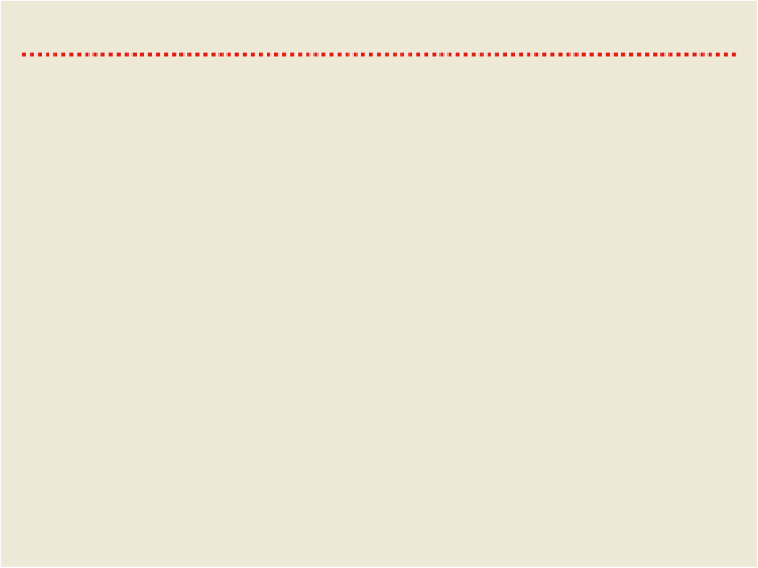Travel Reference
In-Depth Information
BEYOND THE GLITTER
Berber jewellery serves a much wider purpose than simple adornment. A woman's jewellery identifies
her as a member of a clan or tribe, is a sign of her wealth, reflects cultural traditions, and has power
beyond the visual - to protect her from the evil eye.
A woman will receive jewellery from her mother until she marries. For her marriage, her future
husband will commission his mother or sister to provide jewellery. These pieces will be kept by her as
a dowry and added to throughout her life; they will always be made of silver, as gold is considered
evil.
Necklaces are important; the traditional assemblage in the southern oasis valleys sometimes fea-
tures talismans of silver, pink coral, amazonite, amber, Czech glass and West African ebony beads.
Women will also own bracelets,
fibulas
(elaborate brooches, often triangular, used for fastening gar-
ments), anklets, earrings and headdresses. Some jewellery will be worn every day, while the finest
pieces will be saved for occasions such as festivals, pilgrimages and funerals.
Jewellery's protective, medicinal and magical properties are extremely important. The necklaces
contain charms bought from magicians or holy men, offering protection against the evil eye, disease,
accidents and difficulties in childbirth. Silver is believed to cure rheumatism; coral symbolises fertility
and is thought to have curative powers; amber is worn as a symbol of wealth and to protect against
sorcery (it's also considered an aphrodisiac and a cure for colds); amazonite and carnelian stones are
used in divining fortunes; and shells traded from East Africa symbolise fertility.
Talismans feature stylised motifs of animals, the sun, moon and stars, which are all believed to have
supernatural powers. A common symbol to ward off the evil eye is the hand of Fatima, daughter of the
Prophet Mohammed. Any depiction of the hand (which represents human creative power and domin-
ance) or of the number five is believed to have the same effect as metaphorically poking your fingers
into the evil eye with the words
khamsa fi ainek
(five in your eye).
Information
There are internet cafes around Pl al-Méchouar. Most banks with ATMs and exchange fa-
cilities are in the ville nouvelle, but there are banks in the medina.
8.30am-4.30pm Mon-Fri)
In the ville nouvelle.
Main Post Office
(Ave du 20 Août;
8.30am-4.30pm Mon-Fri)
In the medina.
Post Office
(Ave Sidi Abderhman;
Tiznit Voyages
( 0528 86 21 17;
www.tiznitvoyages.com
;
Ave Hassan II; 9am-12.30pm & 2-5pm
Mon-Sat)
This RAM agent also organises excursions and has local maps.
Getting There & Away
BUS
Buses leave from the new bus station just off the Tafraoute road, past the Thursday souq
site. CTM has another office closer to the centre on the same road, and one on Pl al-Méch-







